The pivotal role of IKKα in the development of spontaneous lung squamous cell carcinomas
- PMID: 23597566
- PMCID: PMC3649010
- DOI: 10.1016/j.ccr.2013.03.009
The pivotal role of IKKα in the development of spontaneous lung squamous cell carcinomas
Abstract
Here, we report that kinase-dead IKKα knockin mice develop spontaneous lung squamous cell carcinomas (SCCs) associated with IKKα downregulation and marked pulmonary inflammation. IKKα reduction upregulated the expression of p63, Trim29, and keratin 5 (K5), which serve as diagnostic markers for human lung SCCs. IKKα(low)K5(+)p63(hi) cell expansion and SCC formation were accompanied by inflammation-associated deregulation of oncogenes, tumor suppressors, and stem cell regulators. Reintroducing transgenic K5.IKKα, depleting macrophages, and reconstituting irradiated mutant animals with wild-type bone marrow (BM) prevented SCC development, suggesting that BM-derived IKKα mutant macrophages promote the transition of IKKα(low)K5(+)p63(hi) cells to tumor cells. This mouse model resembles human lung SCCs, sheds light on the mechanisms underlying lung malignancy development, and identifies targets for therapy of lung SCCs.
Copyright © 2013 Elsevier Inc. All rights reserved.
Figures
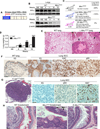
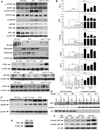
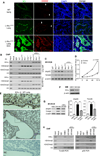
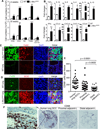
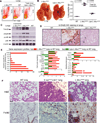
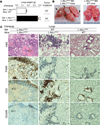

References
-
- Aspenstrom P, Ruusala A, Pacholsky D. Taking Rho GTPases to the next level: the cellular functions of atypical Rho GTPases. Exp. Cell Res. 2007;313:3673–3679. - PubMed
-
- Bardeesy N, Sinha M, Hezel AF, Signoretti S, Hathaway NA, Sharpless NE, Loda M, Carrasco DR, DePinho RA. Loss of the Lkb1 tumour suppressor provokes intestinal polyposis but resistance to transformation. Nature. 2002;419:162–167. - PubMed
-
- Bernstein BE, Mikkelsen TS, Xie X, Kamal M, Huebert DJ, Cuff J, Fry B, Meissner A, Wernig M, Plath K, et al. A bivalent chromatin structure marks key developmental genes in embryonic stem cells. Cell. 2006;125:315–326. - PubMed
-
- Biswas SK, Mantovani A. Macrophage plasticity and interaction with lymphocyte subsets: cancer as a paradigm. Nat. Immunol. 2010;11:889–896. - PubMed
Publication types
MeSH terms
Substances
Associated data
- Actions
Grants and funding
LinkOut - more resources
Full Text Sources
Other Literature Sources
Medical
Molecular Biology Databases
Research Materials

